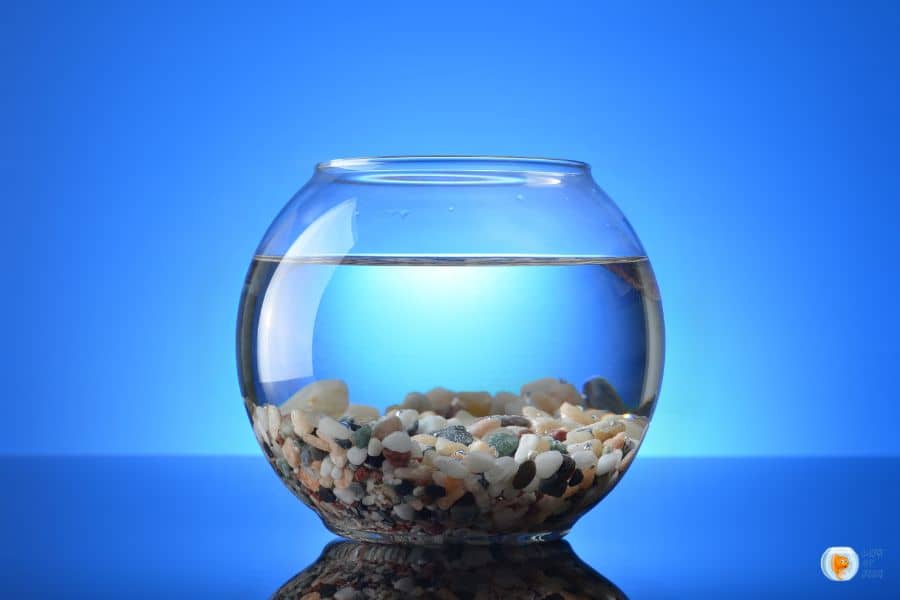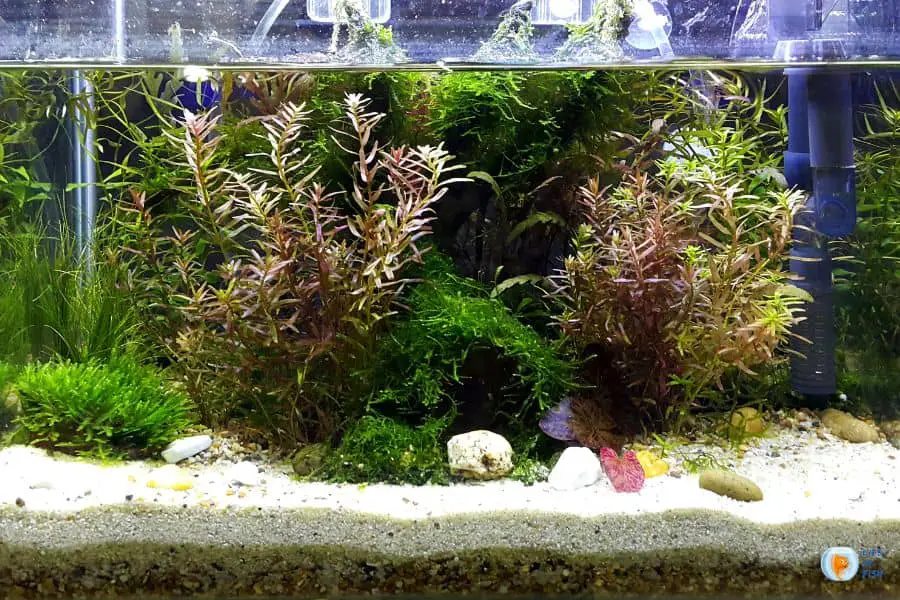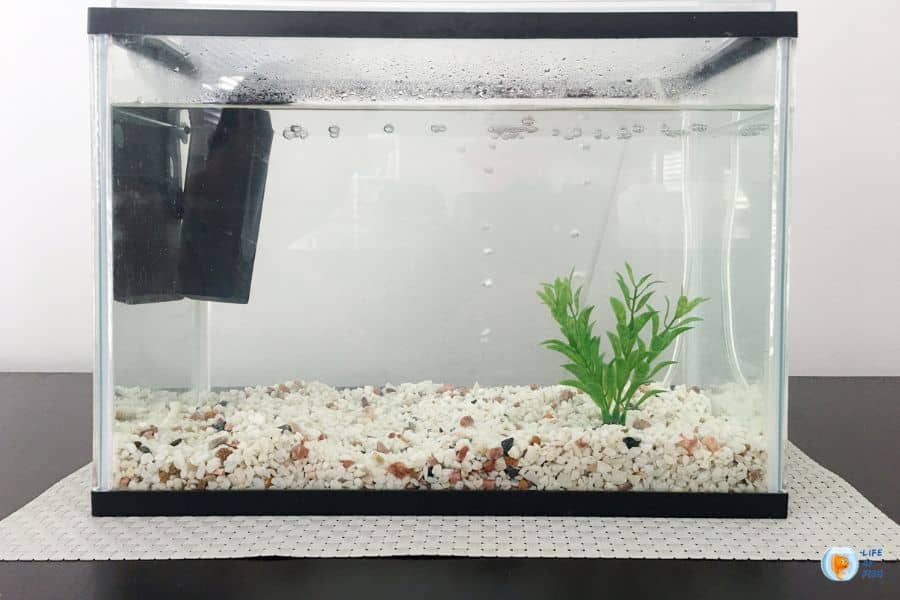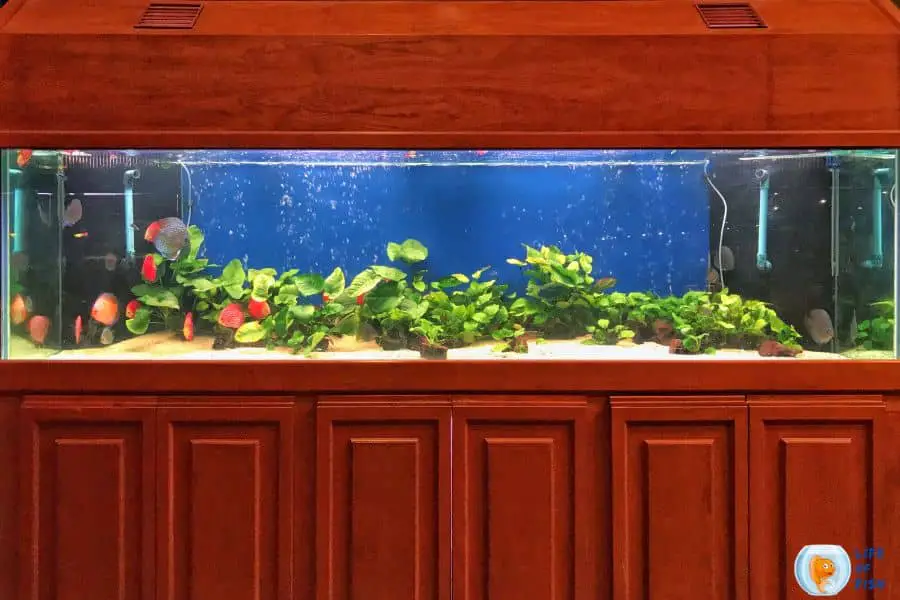The Dark Star method for aquariums is a fairly new method of starting a fishless aquarium cycle. And as you see it becomes increasingly popular in the aquarium community. Those who use it vouch for its simplicity and effectiveness in cycling a new aquarium quickly and with little hassle.

The basic idea behind the dark start method is to lessen the time we spend cycling the aquarium before it is ready to add fish. In a standard fishless cycle, we would need to wait 2-6 weeks for the ammonia levels in our aquarium to peak and then start to decline as nitrites begin to rise. We have to change the water every day during this time, so we waste a lot of time and water.
But now you can save all that hassle by following the dark start method. This article will explain what the dark start method is, its benefits, and its drawbacks. I also give you a step-by-step guide on how you can start your very own aquarium using the dark start method.
What Is The Dark Start Method for aquarium?
Jump To
The dark start method is the same standard fishless cycling method where you add ammonia to your fishless aquarium to start the cycling process. You only need to avoid adding ammonia until the aquarium is cycled and do not light up the aquarium.
The whole idea behind this method is that by leaving the aquarium in the dark, you are simulating the time when the ammonia is first introduced into a new aquarium. Adding fish to and removing them from streams and rivers in the wild is normal. Also waste, uneaten food, and decomposing plants constantly add ammonia to the water. However, the fish become inactive at night and the addition of ammonia slows down.
This decrease in ammonia levels gives the beneficial bacteria a chance to catch up and start to reproduce. The bacteria have had a chance to establish themselves and begin to quickly process the ammonia by the time someone turns on the lights and adds ammonia
By keeping the aquarium in the dark, you essentially give the beneficial bacteria a head start. Then they will be able to process the ammonia more quickly when you add it. Further, the darkness will prevent algae growth during the cycling process.
Benefits Of The Dark Start Method
The Dark Start Method is a slower, more gentle way of starting up your aquarium. There are several benefits to using this method:
- No frequent water changes during start-up. This means that you don’t have to worry about spending much time during the cycling process.
- No start-up algae. By keeping the tank in the darkness, you prevent algae from getting the necessary light to grow, so you don’t have to worry about an algae bloom.
- Reduced likelihood of plants growing slime. This is because the Dark Start Method gives your plants time to acclimate to their new environment before they start photosynthesizing.
- Less intensive. The dark start method saves you time by reducing the time spent testing the water, changing water, and monitoring the progress of the cycle.
- It allows you more time to work on and evaluate your hardscape. This gives you a chance to perfect your aquascape before adding any plants.
- It gives you time to plan your planting. By taking your time in setting up your aquarium, you can carefully select the plants that will best suit your layout.
- You can buy extra plants with the money you save. Because you don’t have to worry about algae taking over, you can save money on supplements and invest it in more plants and fish instead!

Drawbacks Of the Dark Start Method
The drawbacks of the aquarium dark start method are that it can be a lengthy process and it can be difficult to monitor the progress of your plants. The initial cycling process before adding any plants will take around four weeks. Then it takes another 2 to 3 weeks for the plants to fully acclimate and start growing. So, in total, it can take up to seven weeks before your aquarium is ready for fish.
Dry Start Vs. Dark Start
The dry start method establishes aquarium plants before adding any fish to the habitat. Since most aquarium plants are truly not aquatic plants but plants that can survive underwater, they establish best when there is no water in the aquarium. In the dry start method, someone only fills the tank with the amount of water that is necessary to cover the bottom layer of the substrate, instead of filling it up with water The goal is to create a humid environment for the plants to grow in without any water.
You can use the dry start method to prevent algae blooms and to help the plants establish their roots before adding any fish. You can use the dry start method in both fresh and saltwater aquariums.
The dark start method is a bit different from the dry start method as it is used to establish the beneficial bacteria in the aquarium before adding any fish. In the dark start method, the tank is filled with water and left in the dark for a period of time. The goal is to give the beneficial bacteria time to establish themselves before adding any fish to the aquarium.
The dark start method is used to prevent ammonia spikes and to help the beneficial bacteria establish themselves before adding any fish.
So, although both the dry start method and the dark start method are used to establish something in the aquarium before adding fish, they are used for different purposes. The dry start method is used to help the plants establish themselves, while the dark start method is used to help the beneficial bacteria establish themselves.
Choosing The Right Method
When it comes to choosing the right method for your aquarium, it really depends on what you are trying to achieve. If you are looking to prevent algae from growing or have a plant-only aquarium, then the dry start method may be the better option for you. If you are looking to establish beneficial bacteria in your aquarium, then the dark start method may be the better option.
It really depends on your individual goals for your aquarium. But ultimately, both methods use to establish something in your aquarium before adding fish. So, it really comes down to personal preference.

How To Conduct The Dark Start Method
Conducting the dark start method involves a few easy steps.
Prepare the Aquarium for the Cycling
Preparing the tank for the dark start method is the same as preparing the tank for the normal cycling process, but with a small change. You will need to use fertilized plant soil because we don’t add any ammonia to the system. For this, you can use Seachem Flourite, “Aqueon Plant and Shrimp Stratum,” or any other good quality aquarium plant substrate.
You should also add filter media to the filter and install the aquarium lights. But do not turn on the lights.
Fill the Tank with Water
After you have prepared the substrate and installed the filter and lights, it’s time to fill up the tank with water. You can use a garden hose or a bucket to fill up the tank.
It’s important to use dechlorinated water when filling up the tank. You can let the water sit for 24 hours to dechlorinate it, or you can use a water conditioner to remove the chlorine from the water.
Tip: When filling the tank with water, do it gently to avoid clouding the water.
Leave the Tank in the Dark
After the tank is filled up with water, it’s time to leave it in the dark. The goal is to give the beneficial bacteria time to establish themselves in the aquarium.
You can cover the tank with a blanket, or you can put the tank in a closet.
The important thing is to make sure that the tank is in complete darkness.
Leave the tank in the dark for a period of 4-6 weeks.
After 4-6 weeks, the beneficial bacteria should be established in the aquarium, and you can now add fish to the tank.
Things to Know When Using the Dark Start Method
Changing The Water
Most aquarists believe that water changing is not necessary during the cycling process and do a massive water change after the tank is established after about four weeks. However, some still do change 10% to 15% water every 2 to 3 days during the cycling process to help with the nitrate level. Whichever method is ok as far as we know, so do whatever you feel more comfortable with.
Monitoring The Ammonia, Nitrite, and Nitrate Levels
It’s important to monitor the ammonia, nitrite, and nitrate levels in the aquarium during the cycling process.
You can use a water test kit to test the water quality.
The ammonia and nitrite levels should be at 0 ppm. If the ammonia or nitrite levels are high, you can do a water change to remove the toxins from the water. The upper ammonia and nitrite level should be 5 ppm.
The nitrate level will increase during the cycling process. However, the nitrate level should not be higher than 20 ppm. If the nitrate level gets too high, you can do a water change to remove the toxins from the water.
Once the aquarium gets stable ammonia, nitrite, and nitrate levels without changing the water, the cycling process is complete. Your aquarium is now ready for fish.
Adding fish to the tank
After the tank has been cycled and the water quality is good, you can now add fish to the tank.
Start with a few fish and then gradually add more fish to the tank.
Don’t add too many fish at once because it will put a strain on the filter and the beneficial bacteria.

Conclusion
The dark start method is a good way to establish beneficial bacteria in your aquarium without adding fish. The process is simple and doesn’t require any special equipment or much time. However, since this is a new method, it requires more testing to see if it’s more effective than the traditional cycling method.
Yet, some aquarists prefer this method because it saves time and money than the traditional cycling method.
So, if you’re looking for a new way to cycle your aquarium, the dark start method is worth a try.
References
- Sallenave, R., 2016. Important water quality parameters in aquaponics systems. College of Agricultural, Consumer and Environmental Sciences.
- Carrasco, G. and Shamshak, G., 2020. A Practical Introduction to Aquaponics.
- Scagnelli, A.M., Javier, S., Mitchell, M. and Acierno, M., 2023. Efficacy of quick-start nitrifying products in controlled fresh-water aquaria. Journal of Exotic Pet Medicine, 44, pp.22-26.
FAQ
Can I put plants in an Uncycled tank?
No, you should not put plants in an uncycled tank because the ammonia and nitrite levels will be high and will kill the plants. However, if your plants are hardy and can tolerate high levels of ammonia and nitrite, you can put them in the tank.
Can I add fish to an Uncycled tank?
No, you should not add fish to an uncycled tank because the ammonia and nitrite levels will be high and will kill the fish. However, some fish breeds, like guppies and tetras, can tolerate high levels of ammonia and nitrite for a short period of time. Still, it’s not advisable to add fish to an uncycled tank.
Can I put snails in an Uncycled tank?
There are a variety of snails that can be put in an uncycled tank. Some of these snails are hardy and can live in polluted waters, while others are not as resilient and will die easily. It is important to research the types of snails that can be put in an uncycled tank before adding any to the tank.
Read Next : Biofilm On Top Of Aquarium Water (Nothing To Worry)
